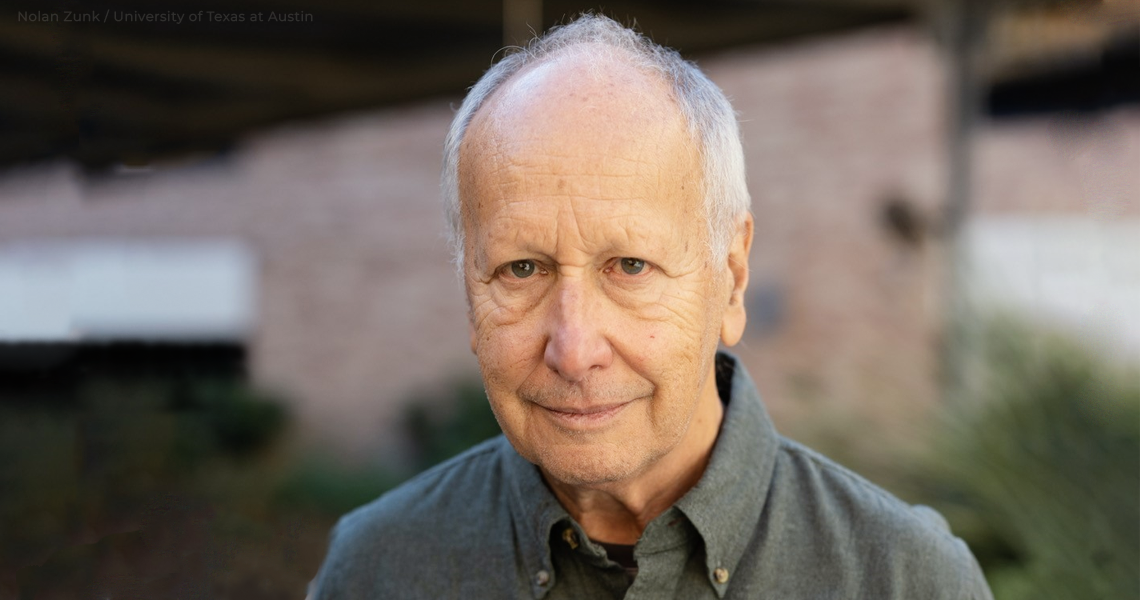
Luis A. Caffarelli: a biography
Equations are tools scientists use to predict the behaviour of the physical world. Many natural laws can be expressed as ‘partial differential equations’, or PDEs, a type of equation that models how several variables change with respect to each other. No other living mathematician has contributed more to our understanding of PDEs than the Argentinian-American Luis A. Caffarelli. He has introduced ingenious new techniques, shown brilliant geometrical insight, and produced many seminal results.
Born in Buenos Aires, Argentina, in 1948, Caffarelli studied mathematics at the University of Buenos Aires. Under the guidance of his advisor Calixto Calderon, he gained his PhD in 1972 for a thesis about polynomials, Sobre conjugación y sumabilidad de series de Jacobi (On conjugation and summability of Jacobi series). The following year he moved to the University of Minnesota for a post-doc, joining up with Calderon who had been given a permanent job there.
Changed direction
At Minnesota, Caffarelli changed the direction of his research after attending a lecture series on harmonic analysis given by Hans Lewy, a retired Polish-born American mathematician. Caffarelli asked Lewy for some problems to work on, and Lewy suggested the ‘obstacle problem’, a classic question in the field of nonlinear PDEs about how an elastic membrane rests on a given obstacle. Caffarelli had to learn the subject from scratch, and was hooked. He quickly began to make startling progress on this topic and the wider area of ‘free boundary problems’. In 1976 he published six papers, and in 1977 had his first paper in the prestigious journal Acta Mathematica: The regularity of free boundaries in higher dimensions.
Chinatown walk
In 1980 Caffarelli moved to New York University’s Courant Institute, which specialises in applied mathematics. Walking one day in Chinatown with Robert Kohn and Louis Nirenberg (the 2015 Abel Prize laureate, who died in 2020), the men decided to work together on a paper about the Navier-Stokes equations, a set of PDEs that models fluid dynamics. The result of this collaboration was the 1982 paper Partial regularity of suitable weak solutions of the Navier-Stokes equations, a landmark paper which would later win the American Mathematical Society’s 2014 Steele Prize for Seminal Contribution to Research. When Nirenberg was asked later about Caffarelli as a mathematician he replied: “Fantastic intuition, just remarkable…I had a hard time keeping up with him. He somehow immediately sees things that other people don’t see.”
By the early 80s, Caffarelli already had a high profile in the mathematics community. He won the 1982 Guido Stampacchia Prize, the first in a deluge of prestigious awards. He was a speaker at the International Congress of Mathematicians in Warsaw in 1983 and won the Bôcher Prize in 1984.
Caffarelli was a professor at the University of Chicago between 1983 and 1986, after which he moved for a decade to the Institute of Advanced Study in Princeton. During this period a major focus of his work was the Monge-Ampère equation, another well-known nonlinear PDE. He developed what’s now called ‘Caffarelli’s regularity theory’, which has important applications in other areas, such as optimal transportation theory.
Missed students
Caffarelli missed working with graduate students and returned to the Courant Instutute in 1994. Since 1997 he has been the Sid Richardson Chair in Mathematics at the University of Texas at Austin, where, among other work, he has made exciting advances to the theory of homogenization, a field of PDE research that examines physical properties at different scales.
Not only is Caffarelli remarkable for the depth of his work, he is also extraordinarily prolific. He has published 320 papers and, aged 74, continues to publish several papers a year. He is much loved within the community and has co-written papers with more than 130 people, his most frequent collaborator being Avner Friedman. Caffarelli’s papers have had 19,000 citations, a number that testifies to his influence in shaping the field. He has advised more than 30 PhD students.
Caffarelli’s other awards include the 2005 Rolf Schock Prize, the American Mathematical Society’s 2009 Steele Prize for Lifetime Achievement, the 2012 Wolf Prize, the 2013 Solomon Lefschetz Medal, and the 2018 Shaw Prize. He was inducted into the US’s National Academy of Science in 1991, and is a member of several other national academies.
Caffarelli is married to the Argentinian mathematician Irene Martínez Gamba, who holds the W.A. Tex Moncrief, Jr. Chair in Computational Engineering and Sciences at the University of Texas at Austin. They have three sons Alejandro, Nicolas and Mauro.
Source for number of papers and citations: MathSciNet